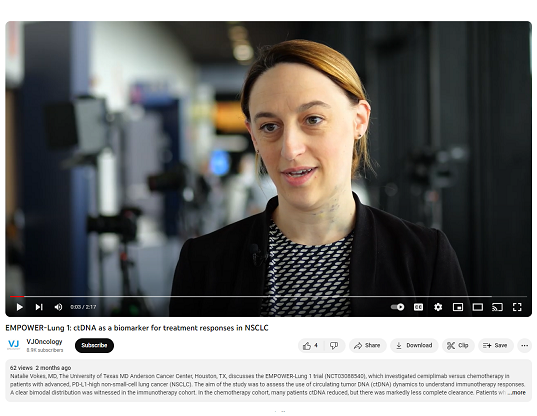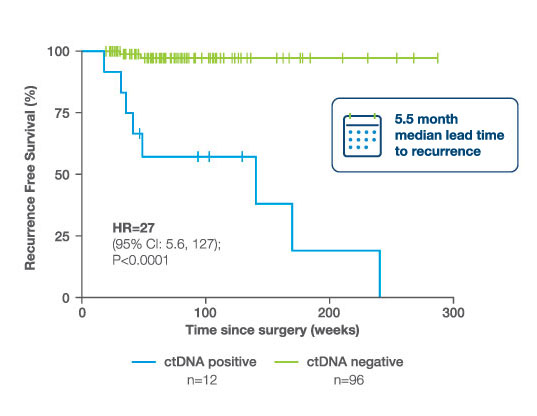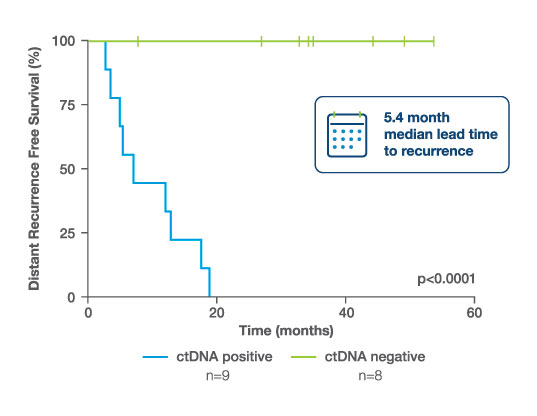Detect and Monitor ctDNA in NSCLC to Inform Treatment Strategy
Identify High Risk Patients
Test for presence of MRD after definitive therapy to assess prognosis1-2
53x
Higher risk of recurrence
for ctDNA positive patients1
Detect Recurrence Earlier
Detect recurrence before
radiographic imaging1-2
5-6 months
Median lead time over
radiographic recurrence1-2
Monitor Immunotherapy
Treatment Response
Track early changes in ctDNA levels to predict outcomes3
96% lower
Risk of death for patients who cleared their ctDNA by week 9 compared to patients with increasing ctDNA3
Evaluate Response to ICI Treatment in NSCLC
ICI (immune checkpoint inhibitors) are FDA-approved with guideline recommendations across all treatment settings in lung cancer (neoadjuvant, adjuvant, locally advanced, metastatic).4
Signatera™ was evaluated in the EMPower Lung-1 trial, a prospective study in patients with advanced or metastatic NSCLC randomized to ICI vs chemotherapy for 1L treatment3
- Rising ctDNA by week 3 or lack of ctDNA clearance by week 9 identified patients experiencing inferior clinical outcomes
- ctDNA deep decrease (>90%) and clearance were associated with significantly improved OS
- Composite ctDNA & RECIST assessment may improve prediction of OS benefit from IO
Inform Your Lung Cancer Treatment Approach With Signatera™
Monitoring circulating tumor DNA (ctDNA) with Signatera™ across the treatment journey can answer important clinical questions and inform treatment decisions.
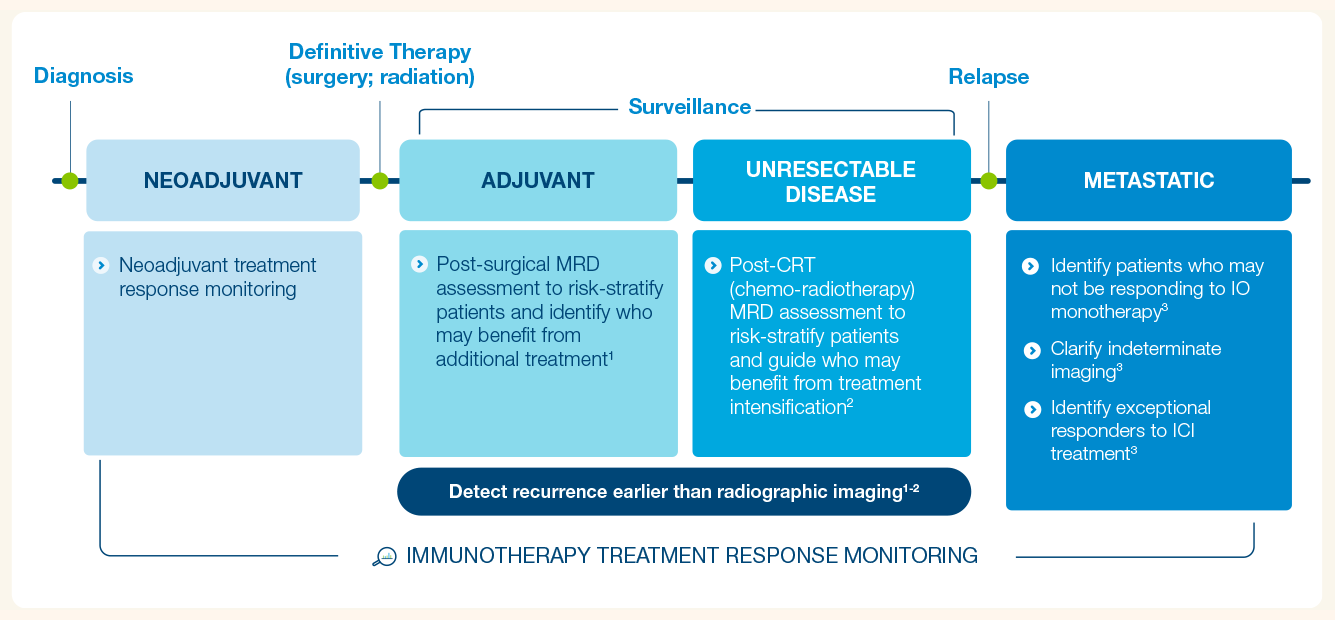
Discover the Data in Lung Cancer
-
Immunotherapy Response Monitoring
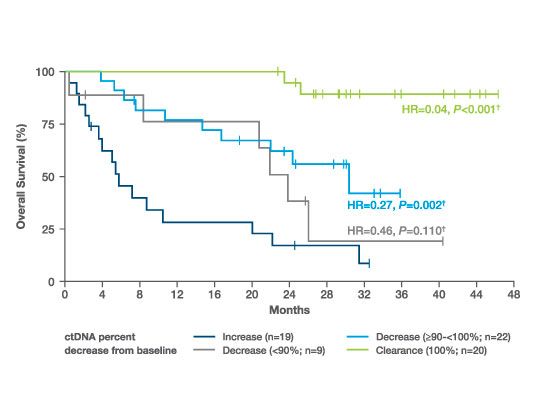
- Rising ctDNA by week 3 or lack of ctDNA clearance by week 9 identified patients experiencing inferior clinical outcomes
- Composite ctDNA & RECIST assessment may improve prediction of OS benefit from IO3
-
Adjuvant (resectable) / Surveillance
-
Adjuvant (unresectable) / Surveillance
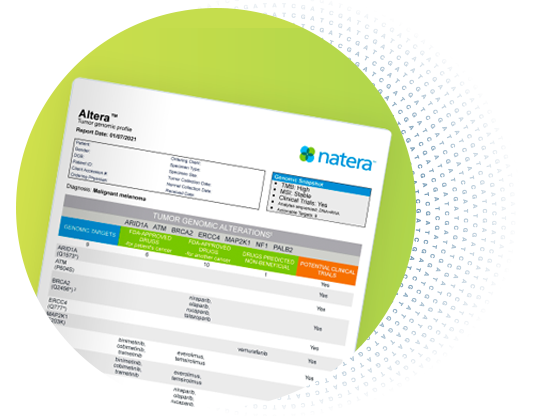
Do More With Less Tissue
One tumor sample – two tests
Reassure Your Patients Living With Lung Cancer
After JoAnn was diagnosed with lung cancer, Signatera™ detected a rise in her ctDNA levels, alerting her oncologist to a progression that was not scannable.
Watch JoAnn’s story to learn how she and her oncologist added Signatera™ testing to their toolbelt to help closely monitor her cancer.
“I want to know. The more you know, the better off you are.” – JoAnn, living with lung cancer
Lung Cancer Resources

The benefits of using ctDNA over traditional scans to assess responses to ICI
Dr. Natalie Vokes shares thoughts on how ctDNA can be used in addition to scans in NSCLC
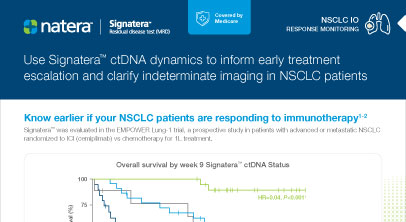
Signatera™ IO Monitoring in Lung Cancer
Learn about Signatera™ for risk-stratification, surveillance, and immunotherapy response monitoring
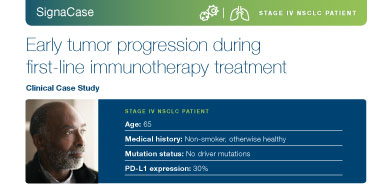
Patient Case Study
Read how Signatera™ detected a rise in ctDNA levels during immunotherapy, informing the decision to pivot to a combination therapy approach.
Ready to try Signatera™ for your lung cancer patients?
*OS = Overall Survival
References
1Martin TK, Dinerman A, et al. Early Real-World Experience Monitoring Circulating Tumor DNA in Resected Early-Stage Non-Small Cell Lung Cancer. J Thorac Cardiovasc Surg. 2024. doi: 10.1016/j.jtcvs.2024.01.017.
2Lebow E, et al. ctDNA-based detection of molecular residual disease in stage I-III non-small cell lung cancer patients treated with definitive radiotherapy. Front. Oncol. 2023,13:1253629.
3Vokes N, Gandara D, et al. Circulating Tumor DNA (ctDNA) Dynamics and Survival Outcomes in Patients with Advanced NSCLC and High (greater than 50%) PD-L1 Expression, Randomized to Cemiplimab vs Chemotherapy. Presented at ASCO Annual Meeting, Chicago, IL, June 2023.
4NCCN Clinical Practice Guidelines in Oncology (NCCN Guidelines ® ) for Non-Small Cell Lung Cancer V1.2024.

